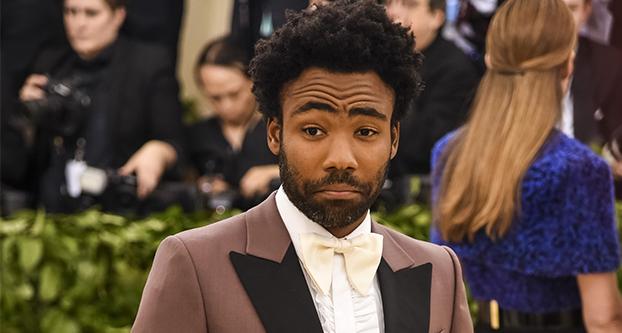Donald Glover is a multifaceted artist. There is no doubt about that. You can find him on FX’s “Atlanta,” which he stars in and writes for; as Lando Calrissian in the upcoming film “Solo: A Star Wars Story;” and let us not forget his rap alter-ego, Childish Gambino.
The latter is the facet catching the most attention at the moment. During his hosting of “Saturday Night Live” this past Saturday, Gambino debuted two new songs. One of those two songs, “This Is America,” came with a music video. Both the visuals and the track presented layers upon layers of social commentary, as well as Gambino’s musical versatility.
Both the audio and the video are irresistibly captivating. The song is another genre-pivot from the P-funk driven “Awaken, My Love,” Gambino’s last studio album. This song is a combination of trap, and gospel-inspired melodies, with the two contrasting one another. This juxtaposition is intentional and beautifully executed with both aspects segueing nicely into each other, presenting two sides to African-American art and making them one.
But the video is where the bulk of the song’s messages are found, or at least where they are found more clearly.
The video begins with Gambino dancing and making eccentric faces to the camera. His dancing and his faces continue throughout the video’s four-minute runtime, but they are quickly joined by acts of violence.
Gambino disposes of a guitar player and a church choir with gunfire. The video wastes no time actually acknowledging the deaths or mourning them. Gambino and the camera just move on, turning the focus back to the rapper’s dancing.
This appears to be a metaphor for the apathy in America toward violence. The man and choir are shot dead but the audience has already moved on and has turned its focus back to Gambino.
But even more shocking is what is going on behind Gambino. In the backdrop is a group of children doing the shoot dance and the South African Gwara Gwara. There is chaos — men jumping to their death, cars being vandalized and people running aimlessly. How many caught that chaos on first viewing? Not many. Hence why the video warrants multiple views.
Again, Gambino is communicating how easily we, as a culture, are distracted from some of the ugliest parts of the world. Mental health, senseless violence, co-dependence on technology, it’s all here; none of it is framed as important.
Gambino even manages to sneak in a dig at the gun laws in the country. The gun he uses to kill the guitar player is wrapped in a red cloth and coddled away, while the human body is dragged off screen.
Arguably the most harrowing part of the video, though, is the end. The camera suddenly cuts to a dark and empty lot, and Gambino’s “character,” per se, is no longer dancing, he’s running. He is running with an unforgettable look of fear, sweat dripping from his face and chest. Then an angry mob comes into frame, and we see what he is so afraid of.
Young Thug’s refrains of, “You’re just a black man in this world,” add even more context to the scene.
Gambino almost seems like a representation of black America and the constant fear there is in living in this country. His apathy is gone, almost as if to represent that he has realized the weight of his actions and the dire state of society.
The video has been analyzed to death, and rightfully so. It is extremely nuanced, and every view reveals a new element to Gambino’s vision. Gambino, who used to be Donald Glover’s main act, has returned. And if this really will be his last musical effort, then it is off to an extremely strong start.




